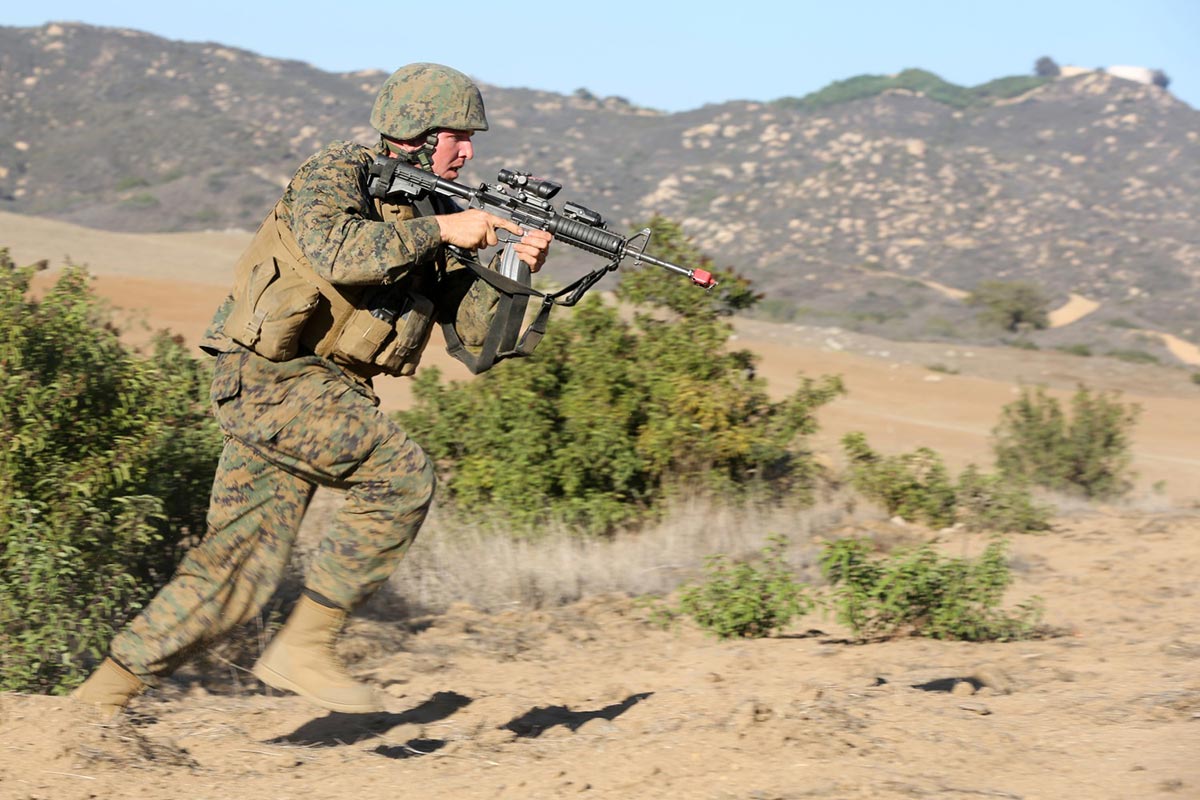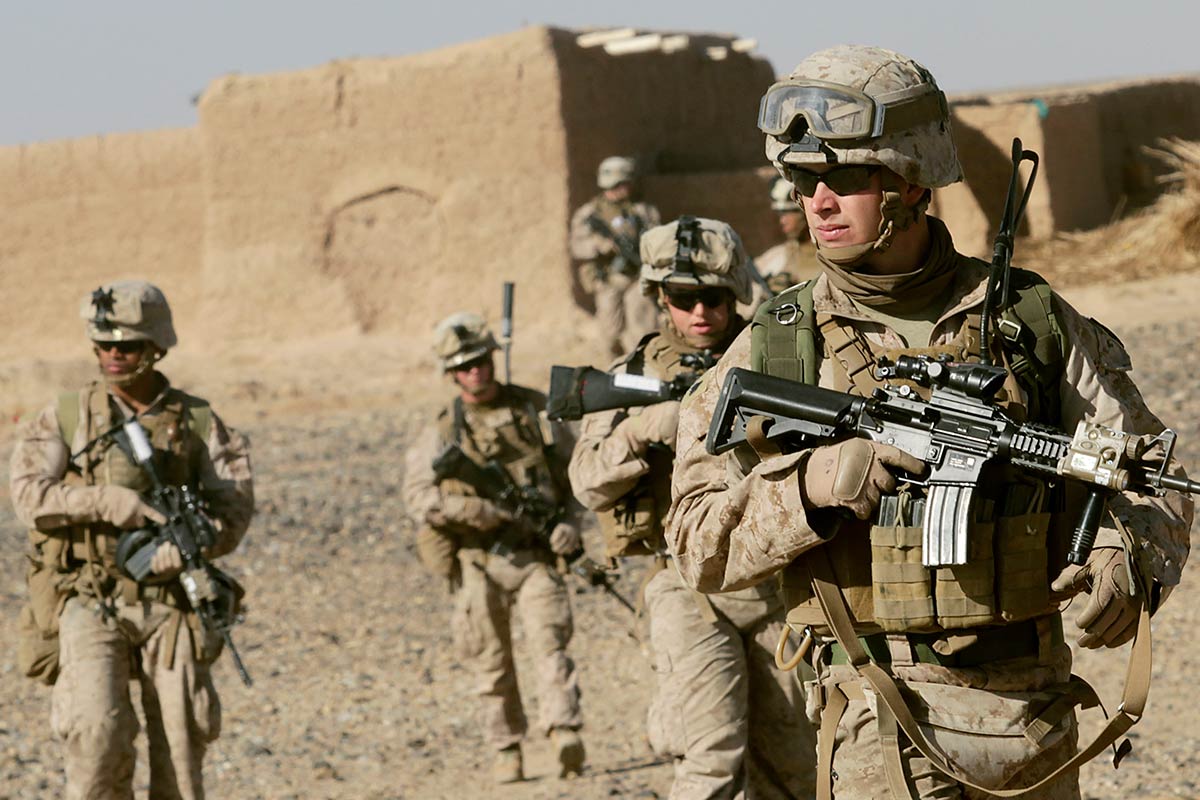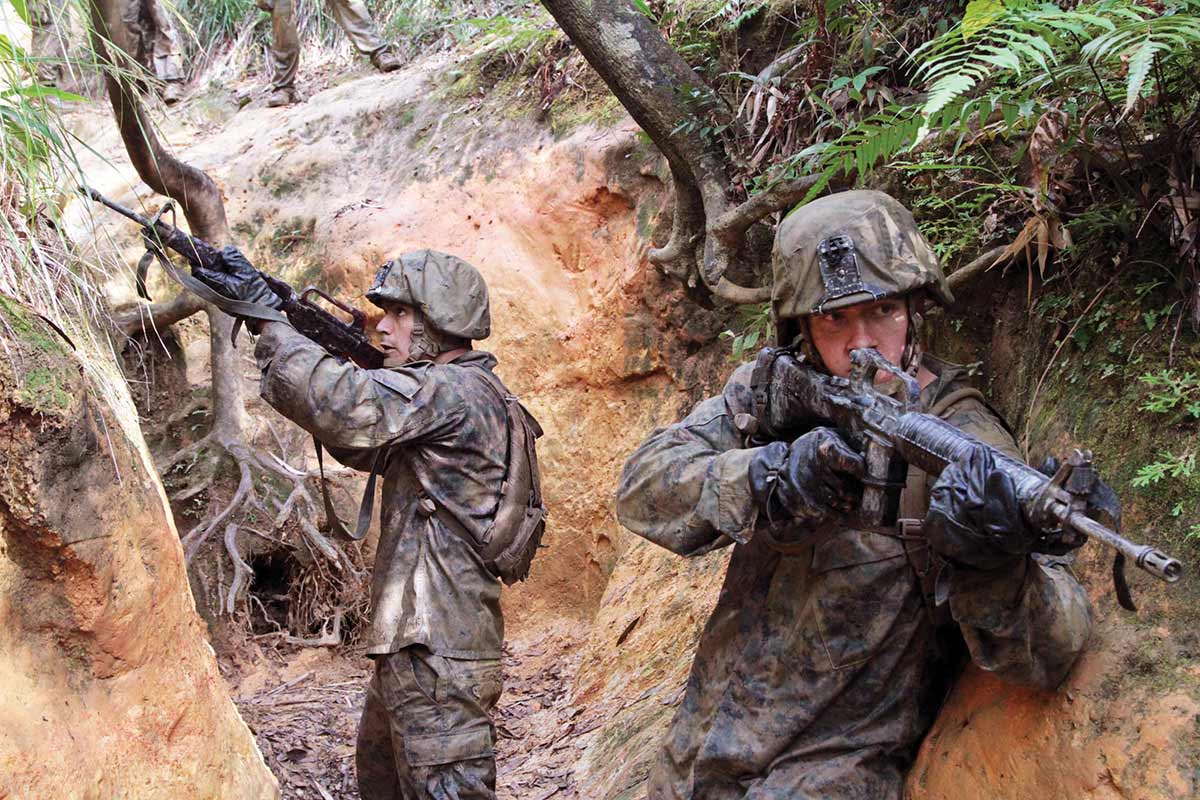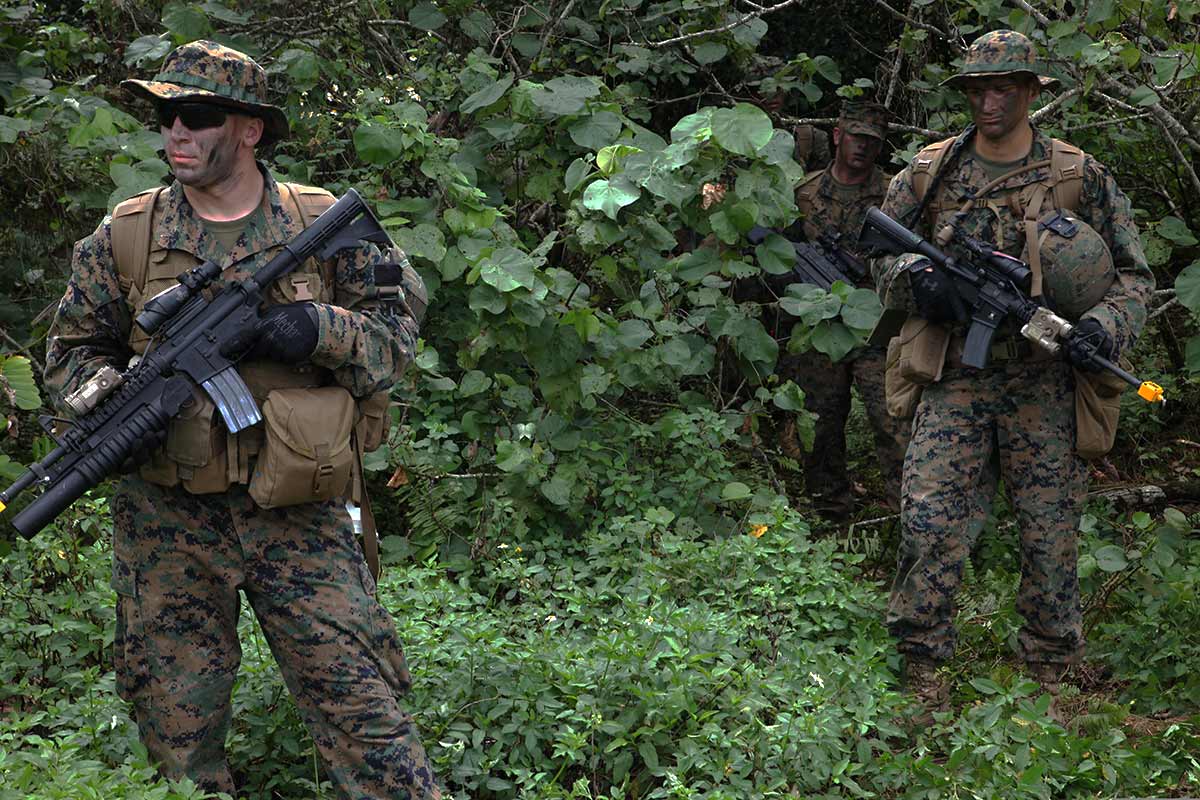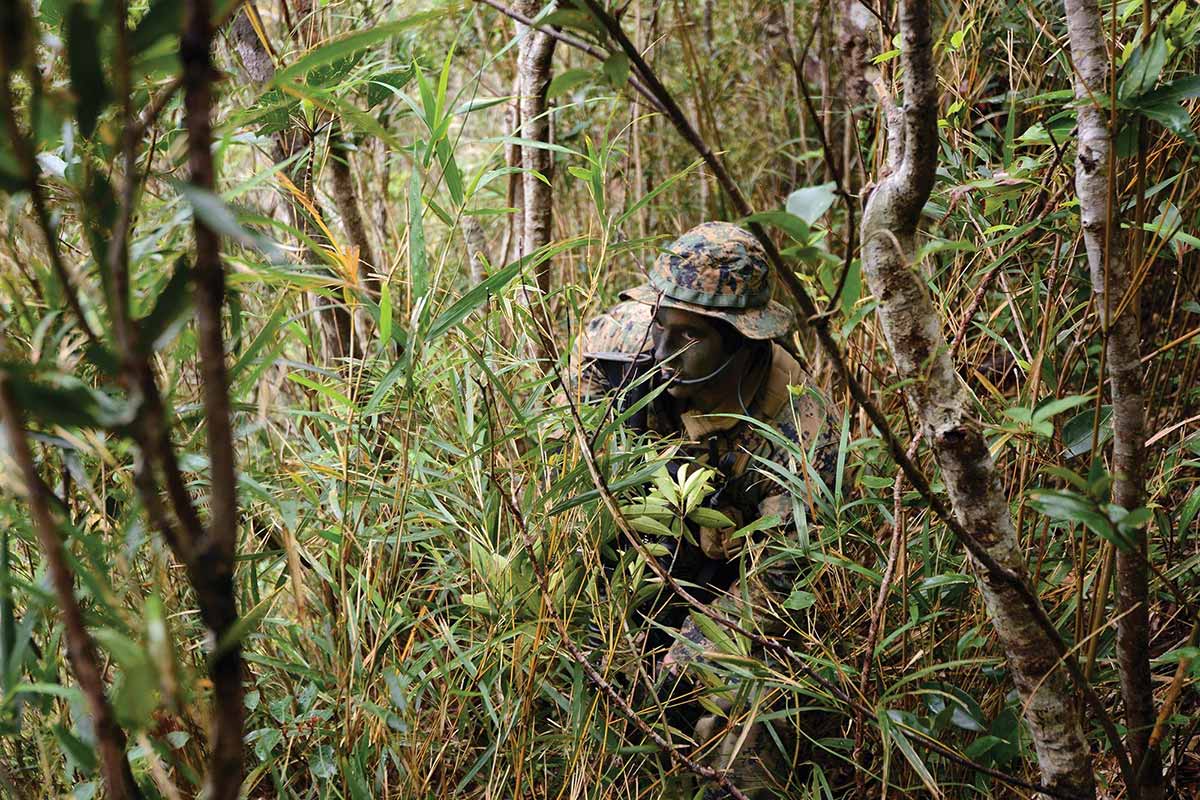Camo: MarPat (woodland); MarPat (desert)
Pants: Six-pocket
Blouse: Four-pocket
Boots: brown leather/nylon
Cover: eight-point cover, boonie
Material: Fire-Resistant Nylon blend
The Marine Corps replaced its decades-old battle dress uniform in woodland camouflage after extensive testing and evaluation in early 2000. The Marine Corps Combat Utility Uniform entered service in 2002 and featured two new distinctive camouflage patterns that derived from pixilated or “fractal” designs.
A common complaint from Marines was that the exposed buttons used to secure arm cuffs caught on loose objects, such as camouflage netting. The design team first tried to resolve the problem by using Velcro on the prototype uniforms to secure arm cuffs. Marines testing the prototypes reported that the cuffs frequently came loose during routine training.
The team re-evaluated different design options and developed a 'no-snag' cuff closure. It basically 'inverted' the design currently found on the camouflage utility uniform. Instead of securing the button-hole found on the cuff-flap to one of three buttons, the new flap with a single button is secured to one of three button-holes. Once secured, the button has little risk of becoming snagged because it now inside the cuff.
Elastic has been added to the cargo pocket opening to ensure items are secured even if the pocket flap is not buttoned. This provides quick access to Marines without the concern of losing items as they engage targets from the prone position or as they assault the objective in rushes.
The new cargo pocket is one reason why dry-cleaning the new combat utility uniform will be discouraged. Using a steam press on the material bunched by the elastic will cause damage to the pocket. The design, however, offsets some appearance detractions experienced with our current uniform. Tightening of the elastic cord prevents the pocket from billowing; permanent press maintains the appearance of the pocket flap and pocket folds. Hand irons on low heat, used without starch, will be allowed.
The combat utility uniform is embroidered with a Marine Corps emblem on the left breast pocket, eliminating the need for Marines to apply iron-on decals. The emblem will be centered on the slanted pocket and parallel to the deck. All Sailors serving with Marine Corps units will be authorized to wear the emblem; a "U.S. NAVY" service will distinguish Sailors from Marines.
The combat utility uniform will have pockets inside the sleeves and trousers where pads can be inserted. Pads will be issued and surveyed as command organizational property. The padding reduces injuries during training while allowing Marines to be more aggressive in movement on hard-packed earth, concrete or other similar surfaces.
The addition of shoulder pockets improves the utility of the uniform. All pockets on the camouflage utility uniform are covered when flak jacket and load bearing vest are worn. Shoulder pockets can be accessed while in full battle gear, even while in the prone position. The pocket is large enough to hold frequently needed items such as camouflage paint or note taking material.
Some Marines testing the uniform noted that the pocket was covered by the roll of the sleeve when in garrison. This was corrected, however, when Marines observed proper regulations for rolling sleeves.
The standard waist band with adjustable buckle on the camouflage utility uniform will be replaced with an elasticized waistband on the combat utility uniform. his will allow a more 'automatic' adjustment to the waist and provide a wider range of sizes to allow additional layers of clothing such as poly-propylene or new fleece garments.
The elastic waist band is another reason dry cleaning the combat utilities will be discouraged. As with the cargo pocket, the elastic gathers the material at the waist, which would be damaged by steam pressing.
Single trouser pleats were added on either side of the waist to increase room around the hips, seat and thighs. This added volume provides more comfort to the wearer, and also improves overall durability by reducing stretching of material against the body. Permanent press follows the pleats down to and along the trouser creases in the front of each leg.
